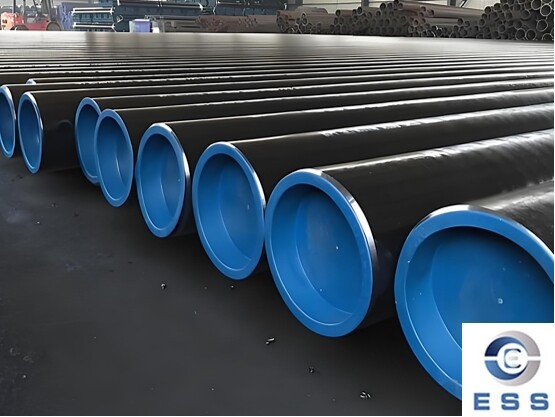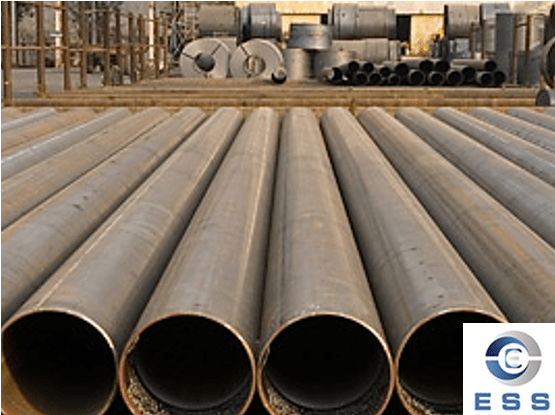
What Is The Heat-resistant Temperature of Carbon Steel Pipe?
As a widely used metal pipe in the
industrial field, the heat resistance of carbon
steel pipe is directly related to the safety and service life of the
equipment. Under normal circumstances, the heat-resistant temperature range of
carbon steel pipe is between 200 and 450 degrees Celsius, but this indicator is
not fixed, but is affected by a combination of factors. This article will
deeply explore the factors affecting the heat-resistant temperature of carbon
steel pipe from three aspects: material composition, manufacturing process and
use environment, and provide scientific guidance for related applications.
Basic range of heat-resistant
temperature of carbon steel pipe
Generally speaking, the heat-resistant
temperature of carbon steel pipe is between 200 and 450 degrees Celsius:
Due to the low carbon content, its
heat-resistant temperature is usually around 200 to 300 degrees Celsius, which
is suitable for occasions where the temperature requirements are not extreme,
such as general hydraulic
tube systems and pipeline connections in some mechanical manufacturing
fields.
2. High carbon steel pipe
High carbon content can improve heat
resistance, and the temperature resistance can reach 400 to 450 degrees
Celsius, but it will also make the material more brittle under certain
conditions. Therefore, it is necessary to balance its heat resistance and toughness
in applications under high temperature environments.
Factors affecting the heat resistance
temperature of carbon steel pipes
1. The effect of carbon content on heat
resistance temperature
Carbon is one of the main alloying elements
in steel materials and has a significant effect on the heat resistance of steel
pipes. The heat resistance temperature of mild steel pipes is relatively low,
generally around 200 to 300 degrees Celsius. Due to the strengthening effect of
carbon elements, high carbon steel pipes have relatively better heat resistance
and can withstand high temperatures of up to 400 to 450 degrees Celsius.
However, excessive carbon content may also increase the brittleness of steel pipes,
so comprehensive considerations are needed in practical applications.
2. The relationship between manufacturing
process and heat resistance
In addition to carbon content, the
manufacturing process of carbon steel pipes will also affect their heat
resistance. For example, the internal structure of steel pipes optimized by
heat treatment process is more uniform and the grains are refined, thus
improving the heat resistance of the material. In addition, some special
manufacturing processes, such as quenching and tempering, can further improve
the stability and service life of carbon steel pipes in high temperature
environments.
3. Test of heat resistance by use
environment
The environmental conditions faced by
carbon steel pipes in actual use are also an important factor affecting their
heat resistance. Carbon steel pipes used in high temperature, high pressure or
corrosive environments need to have higher heat resistance and corrosion
resistance. For example, in the application of drill pipe or OCTG pipe,
carbon steel pipes need to withstand extreme temperature and pressure
conditions. Therefore, when selecting carbon steel pipes, their use environment
must be fully considered to ensure that the steel pipes can work stably and for
a long time under harsh conditions.
Material selection suggestions
1. Clarify the working temperature range
According to the actual working
temperature, select a suitable carbon content range to meet the heat resistance
requirements and avoid safety due to excessive brittleness of the material.
2. Focus on process optimization
Prioritize the use of products that have
undergone advanced heat treatment and special process treatment, which not only
improves the heat resistance, but also enhances the comprehensive stability of
the pipe in complex environments.
3. Comprehensively evaluate the use
environment
In the design and material selection
process, factors such as temperature, pressure and chemical media should be
fully considered to ensure that the pipe can maintain a good condition for a
long time in actual application.
Summary
In summary, the heat resistance temperature
of carbon steel pipes is a complex issue involving multiple factors. When
selecting and using carbon steel pipes, factors such as its carbon content,
manufacturing process and use environment should be comprehensively considered
to ensure that the heat resistance of the steel pipe can meet actual needs.
Read more: Thermal conductivity of carbon steel pipe or Roughness of carbon steel pipe













 Eastern Steel Manufacturing Co.,Ltd not only improve product production and sales services, but also provide additional value-added services. As long as you need, we can complete your specific needs together.
Eastern Steel Manufacturing Co.,Ltd not only improve product production and sales services, but also provide additional value-added services. As long as you need, we can complete your specific needs together.










